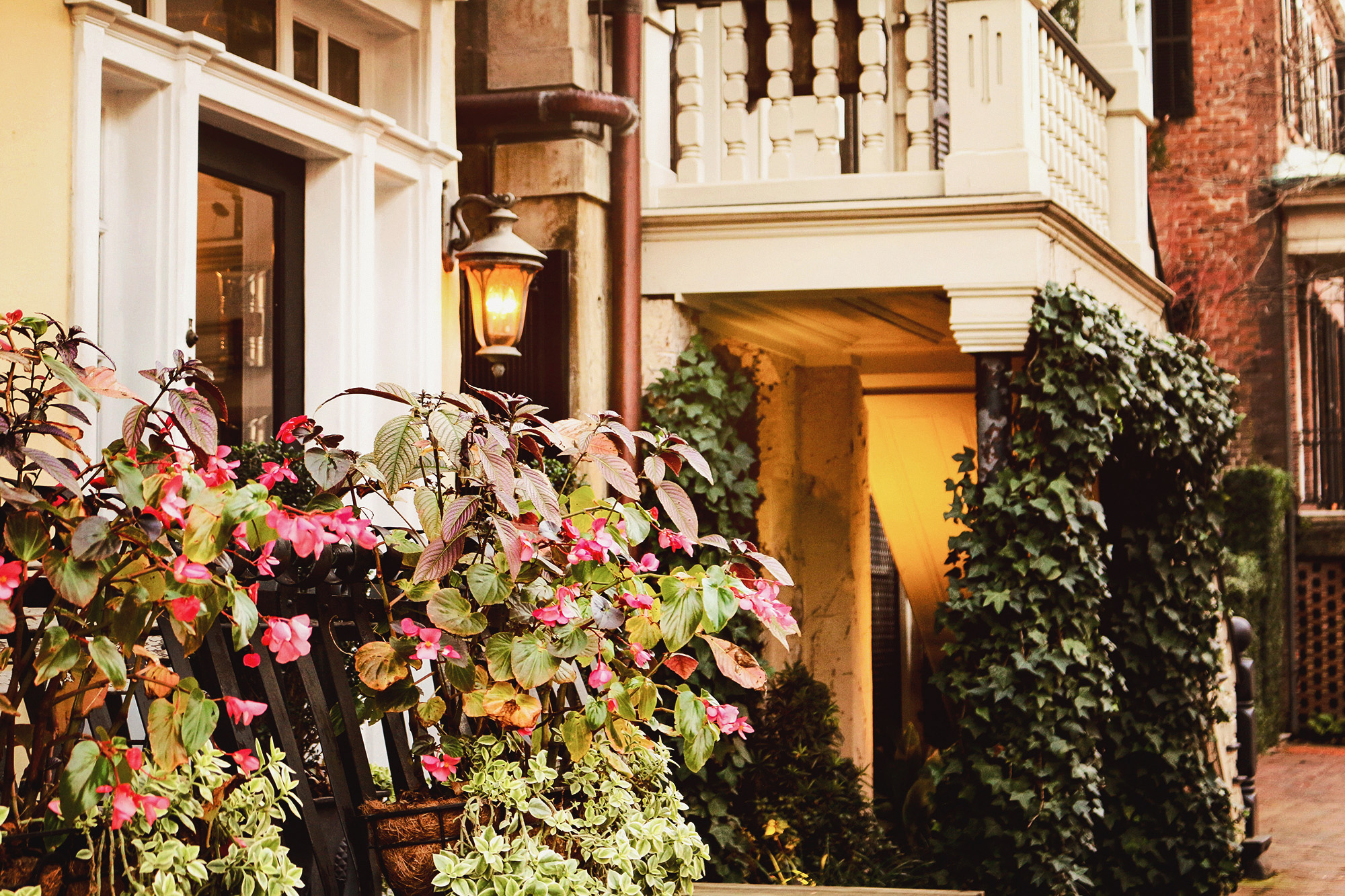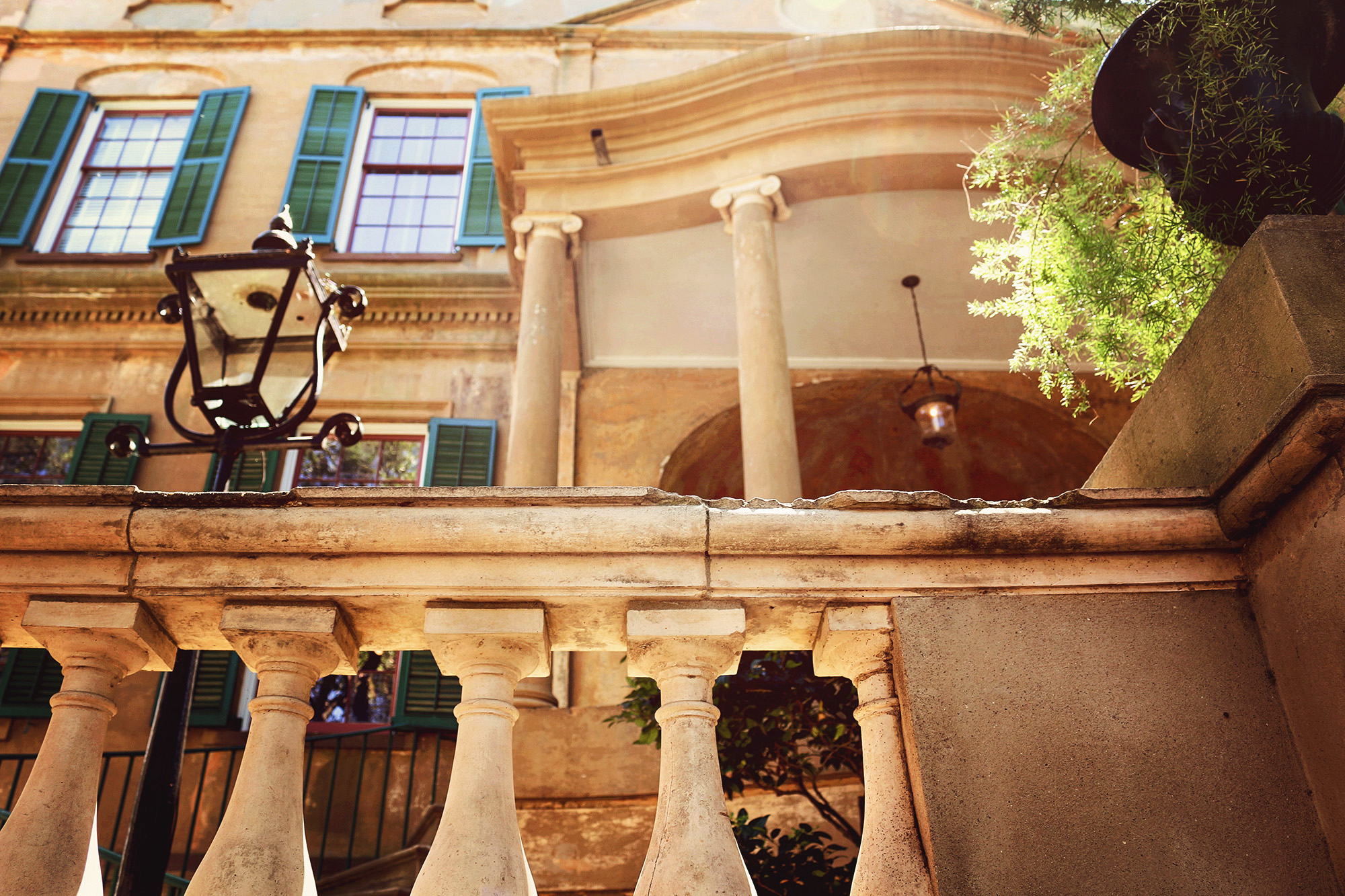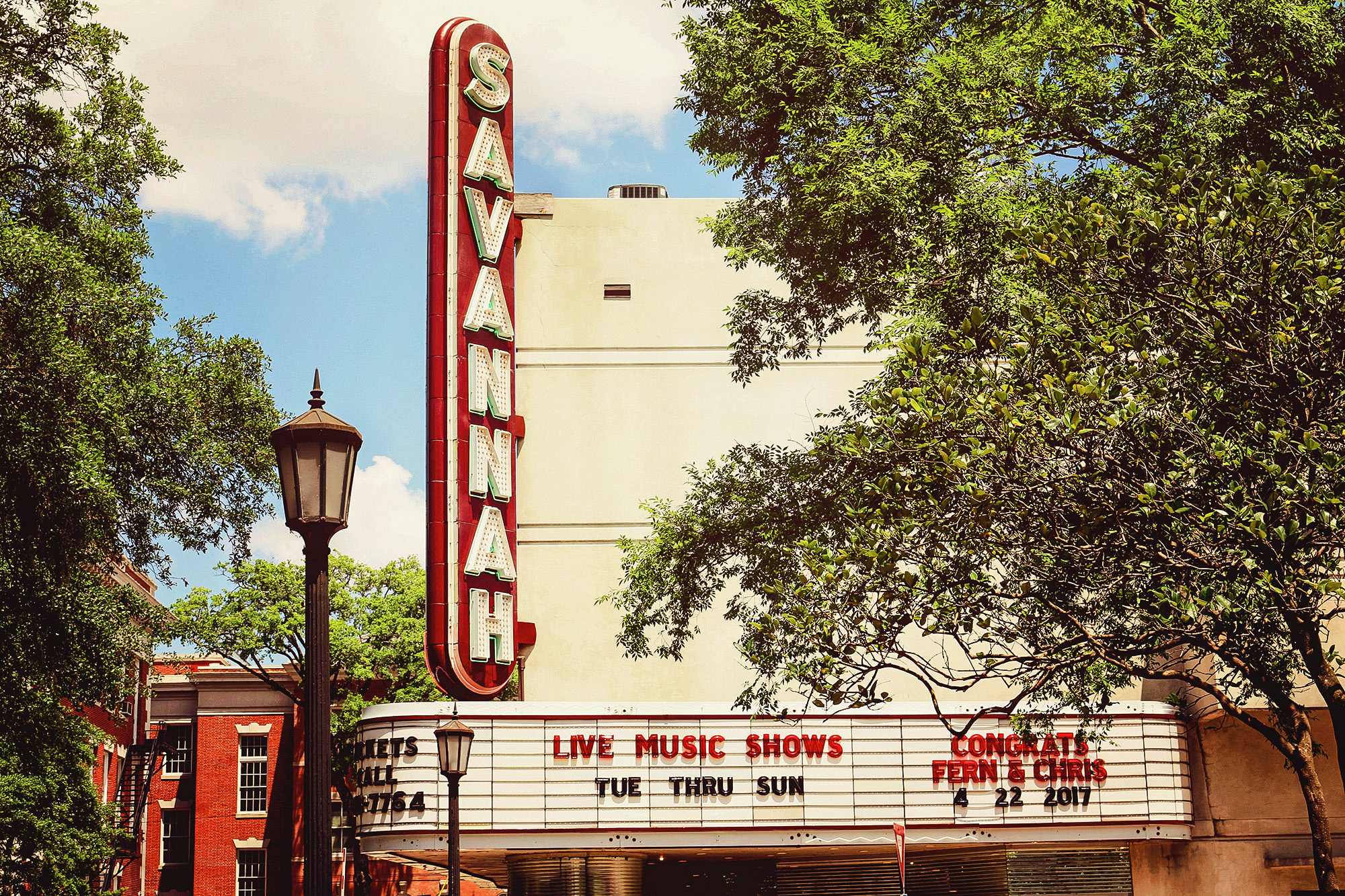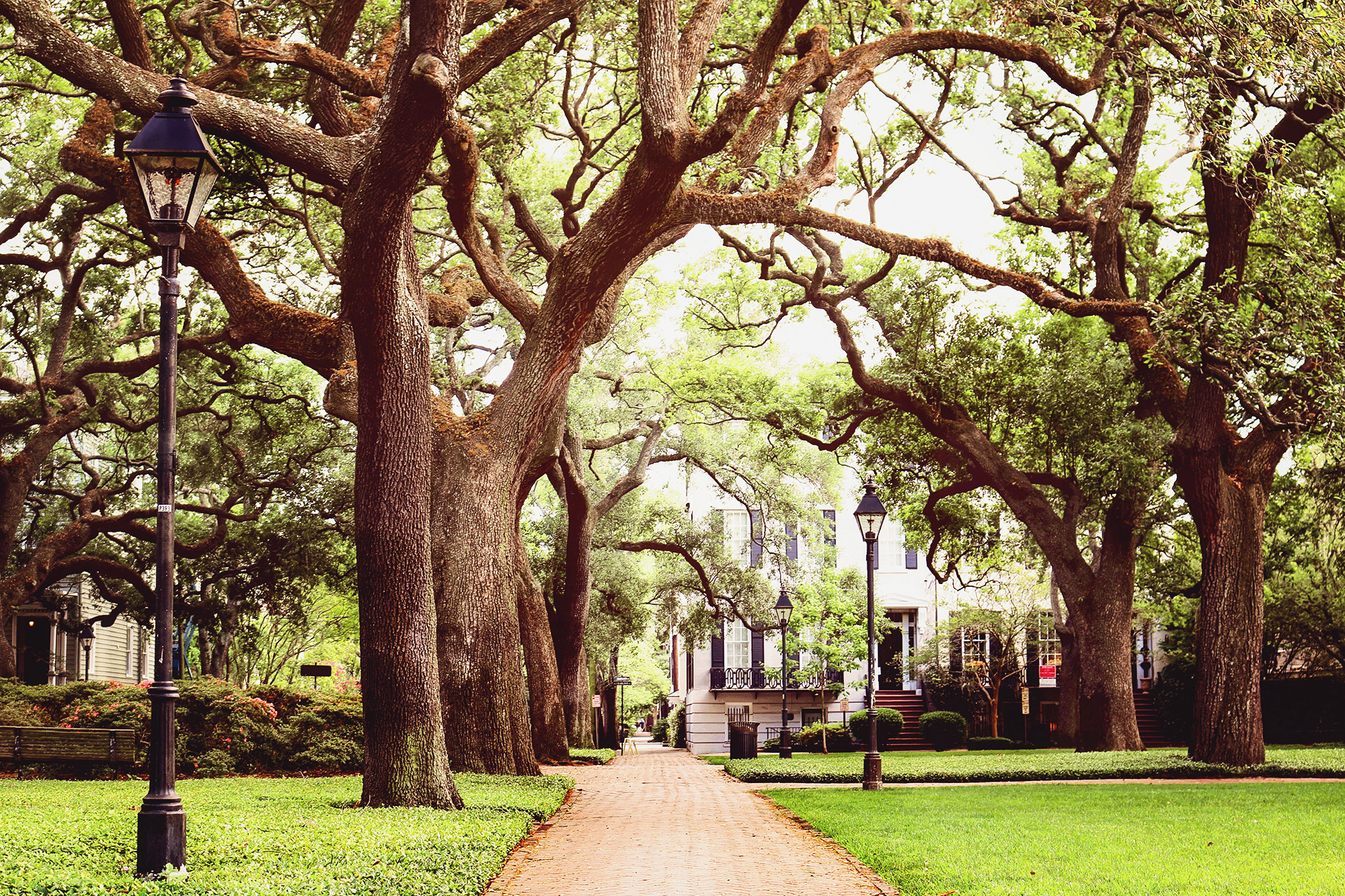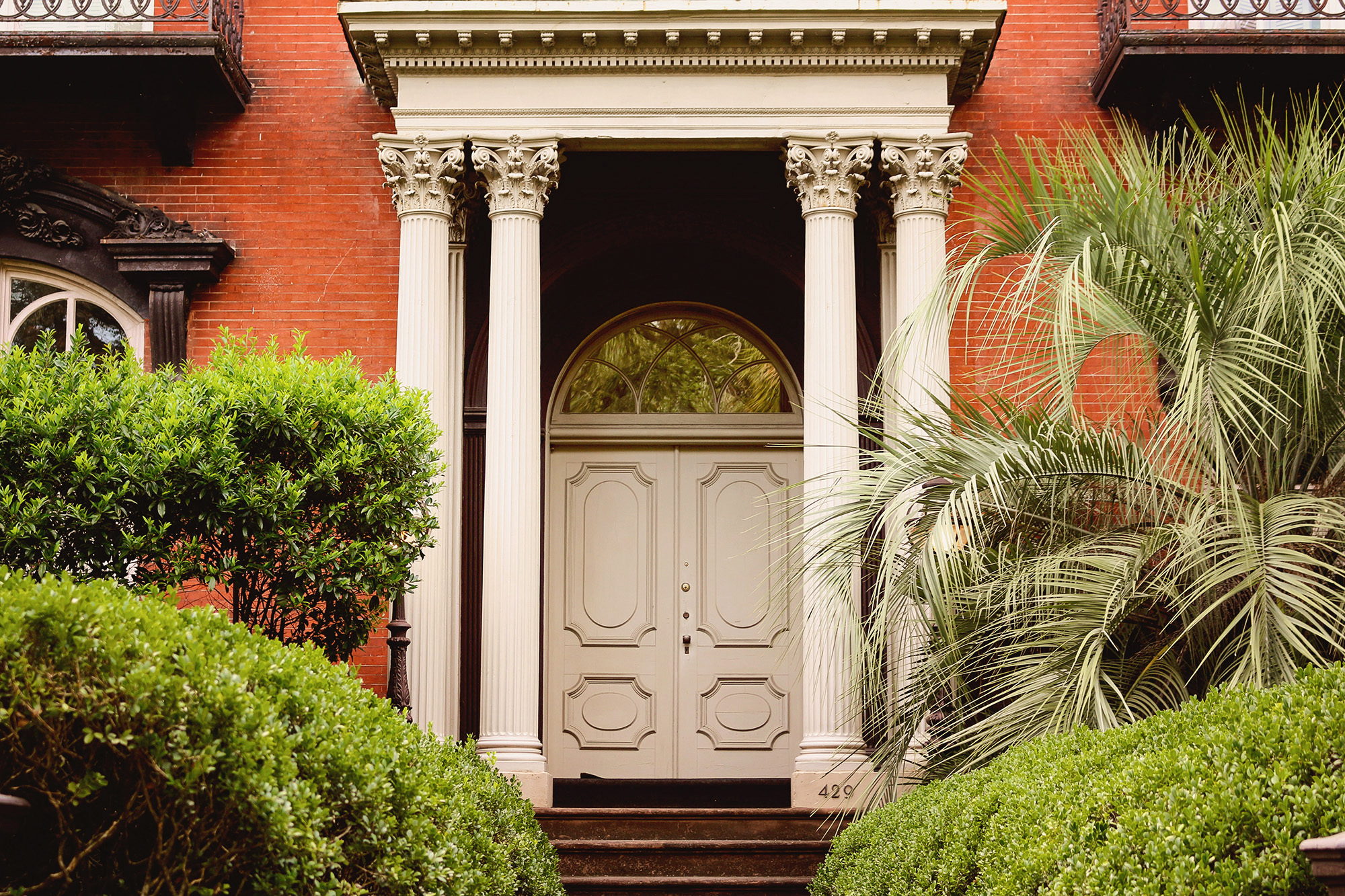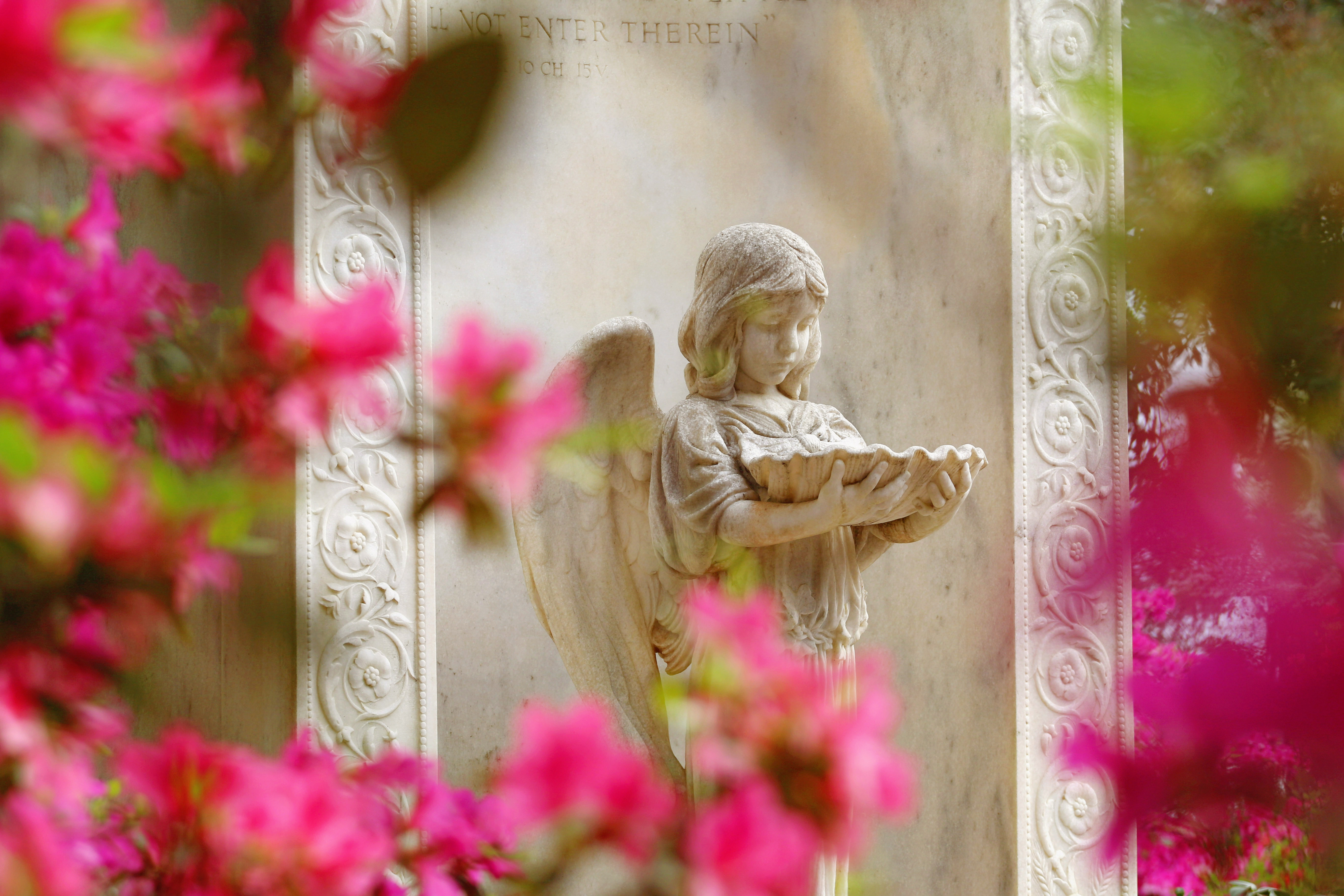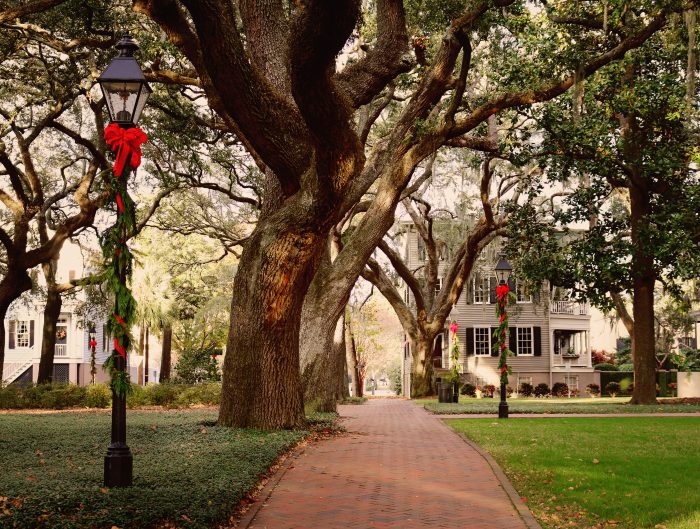“One hundred and fifty-six years ago the ‘woodland’s grey arcades, the flickering umbrage, and half-tropic lights’
of the primeval forest covered the site whereupon to-day, in the grandeur and beauty of a great city, stands Savannah,
the lovely ‘Forest City’ of the South.” -Adelaide Wilson, Historic and Picturesque Savannah
When I was flying back and forth between Savannah and New York City regularly, I kept hearing New York City connections every time I spoke with locals in Savannah. Many had lived the NY dream and returned. And anytime I got a ride somewhere, I would ask the driver the same question: “What brought you to Savannah?” and they replied, “I came here to visit once, returned home to pack my things, moved and never left.” I felt as if these people were sent to me because I had longed to do the same. Why is it so many of us feel this way? Why do people return, again and again, and why do they choose to stay? Savannah is not only a beautiful, southern town with scenic marsh and ocean views, it is a town that honors its past and preserves its authenticity while pushing the boundaries of creativity, and it is a town graced with interesting characters and extraordinary, legendary trees. This combination makes it appear almost mythical. And so, Savannah inspires the artist, creative mind, storyteller, writer, filmmaker, adventurer, historian, musician, photographer and maker and attracts cultural diversity not unlike New York City. Savannah inspires people to create. But I think people are also drawn here by fate. Because Savannah tends to be a place filled with unexpected and serendipitous connections at every turn. I’ll continue to share more of these stories on future blog posts because I, myself, ended up in Savannah under such circumstances. For now, I’ll start with one story, and maybe it will pique your interest! On a whim, I looked up the history of the Telfair Academy while I was researching sculptures by John Walz, and I discovered that the architect of the Telfair Academy (Alexander Telfair House) was William Jay, one of the best trained architects in America. You can read about the unusual, extensive chain of events that brought William to Savannah here. He also did the Savannah Theatre, Owens Thomas House and William Scarbrough House. His daughter, Anne, married Robert Bolton of Savannah, and they built a home in NY called Bolton Priory in 1838. One of their sons, William Jay Bolton, became the first person in the US to design and manufacture figural stained glass windows, the first of which were built at their NY home where they were good friends and neighbors with Washington Irving! I had taken the train up to this area of NY a few times to take pictures, and I had visited Irving’s grave in Sleepy Hollow, but little did I know of this Savannah connection until now. These stories are endless here.
Now let’s talk about the trees. They say being surrounded by trees rejuvenates our body, mind and spirit. That walking through nature and being enveloped in a green canopy reduces our stress and improves our overall health. If this is true, what might be said of a forest of live oaks like the one we see in Savannah? While glancing at the whistling leaves, swaying branches and wispy moss of these gentle giants, we feel deep admiration. We can sense these trees have knowledge or wisdom we’ve yet to comprehend. Historic Savannah is filled with great mysteries running through and below her streets – many still undiscovered – but none could be greater than the mysteries hidden in the trees. Have you ever felt sadness at the loss of a tree? Every time one of Savannah’s live oaks is cut down, it leaves a gaping hole. A valuable asset is lost. Memories are lost. A part of ourselves is lost. While numerous other trees can be found throughout Savannah, including the palmetto, magnolia, crepe myrtle, dogwood and tulip tree, live oaks account for two-thirds of this thriving, urban forest. Their roots are strong and extensive, forming a vast web beneath the city squares, and they are known to weather the worst of storms. And so, we feel safe and protected in their care, don’t we? Perhaps the forest is our natural habitat. As soon as we set foot in historic Savannah, our eyes are immediately drawn to the infinite branches outstretched across the city, and we yearn to be a part of their home and feel more connected. We yearn to be part of their story. After all, these trees are a living past – our past – and the only one of its kind. That being said, while visiting the Historic District, look out for the Candler Oak Tree, located at the corner of Drayton and Gaston, next to Forsyth Park. It is one of the oldest trees in Savannah, estimated to be about 300 years old, and it is a GA landmark and historic tree, listed on the National Register of Historic Trees. The Savannah Tree Foundation has been entrusted as its caretaker, becoming the first organization in the country to secure a conservation easement for a single tree, and they continue to work hard in their preservation efforts, so look out for their next volunteer event!
While I attended the Savannah College of Art and Design, I lived in downtown Savannah for four years, most of which were spent on a little corner of Chatham Square and the studios of Eichberg Hall. After graduating, my career took me to Virginia, then New York, then back to Savannah again. Over the course of 14 years, I’ve written of Savannah at length through personal correspondence, and I still find it difficult to encapsulate all that she is and has been. Just know that in my life, Savannah is the beginning. Savannah is the beginning of many things, including leaving family for the first time, finding myself for the first time, falling in love for the first time, letting go for the first time, making life-changing decisions, discovering the beauty of solitude and the joy that comes in exploring that space, and well, I think you understand now. When I left Savannah, a part of me never left. And all of the years I spent away, it was the only place I ever wanted to go back to. Someday, I’ll tell the whole story. In the meantime, I hope you can imagine yourself there, walking through the streets and squares, discovering the quirks, unique traits, inconspicuous details and the captivating, quiet beauty of it all, as you look through my photographs. Maybe you’ll understand why so many of us fall in love and choose to stay.
Most people picture historic downtown when they think of Savannah. In a city of close to 150,000 people and 108 square miles, the 2.3 square miles of historic downtown is really only a small part of what Savannah actually is, but historic downtown and its remaining 22 squares form the roots of this magnificent city. It is here where tour guides stroll the sidewalks day and night, telling their stories and (sometimes) urban legends. Savannah was established in 1733, making it the oldest city in Georgia. Today, it is a National Historic Landmark District and one of the largest in the country. After living in New York City seven years and walking 6 miles home most weekdays, this little nest in the South feels more quaint and charming than ever, and the trees feel unusually uncommon. Though constantly changing and not without fault, Savannah’s beauty only blossoms with time, for her roots grow deep in the ground, her branches extend to everyone, and though her scars are many, she spreads healing and hope. Savannah understands where our country began, where we’ve been and how far we’ve come, and she’s a testament to everyone that came before us, thriving culturally and aesthetically because she hasn’t forgotten her past.
When General James Edward Oglethorpe first arrived with 120 settlers, he named the last American colony “Georgia,” after King George II of England, and became friends with the local Indian chief, Tomochichi (born 1644) who allowed the newcomers to settle and flourish without warfare. If not for Tomochichi, Savannah might not exist because he willingly gave his land to Oglethorpe. In fact, he is referred to as the co-founder of Georgia. At this time, slavery was illegal and religious freedom was granted. Savannah soon became America’s first planned city, designed by Oglethorpe as a grid system interconnected by squares and parks. Architect John Massengale called Savannah’s city plan “the most intelligent grid in America, perhaps the world,” and Edmund Bacon wrote that “it remains as one of the finest diagrams for city organization and growth in existence.” The American Society of Civil Engineers has honored Oglethorpe’s plan for Savannah as a National Historic Civil Engineering Landmark, and in 1994 the plan was nominated for inclusion in the UNESCO World Heritage List. William Tecumseh Sherman, general in the Union Army during the American Civil War, said, “The city of Savannah…is a handsome one…houses of brick or frame, with large yards, ornamented with flowers…streets perfectly rectangular, crossing each other at right angles [and] lined with the handsomest parks and shade-trees of which I have knowledge.” As a side note, I unexpectedly discovered Sherman’s grave in St. Louis’ Calvary Cemetery recently, without knowing it was located there, and gasped when I saw what had been carved into his headstone, front and center: an acorn. Coincidence?
Sadly, during the American Revolution, Savannah experienced the cruelties of war, losing the city to the British between 1778 and 1782, the Siege of Savannah (1779) being one of the bloodiest battles our country has known. When Savannah re-gained independence after the war, the farming and cotton industries boomed, bringing significant wealth to the city. Though previously a free colony, slaves were now legal, and African-Americans were transported to Savannah’s ports through the trans-Atlantic slave trade. These people formed the Gullah community, or a culture of great importance and value that’s still an integral part of the South. In this pre-Civil War period, Savannah witnessed two wide-spread fires, a yellow fever outbreak, destructive hurricanes and other hardships but proved strength and resilience time and again. Through it all, Savannah was widely admired around the country and world for her beauty and stunning oak trees…always the trees!
During the Civil War, the economy crumbled. On a “March to the Sea,” General Tecumseh Sherman spared Savannah after burning everything in his path from Atlanta to the Atlantic Ocean. It is debated why Savannah was not burned, but the prevailing theory is that she was too beautiful. Instead, General Sherman offered Savannah to Abraham Lincoln as a Christmas gift in 1864. Savannah rebuilt itself after the war and quickly established a cultural renaissance, owing much to the freed slaves who helped the city prosper and flourish. Remember, Savannah was founded in 1733, so it took roughly 130 years to reach this great height. The framework that built the city is filled with the heart and soul of the American Dream, as well as the treacherous journey people undertook and the painful realities they faced. You can still feel the ache of Savannah’s layered history as you walk through the streets and squares that laid out her foundation. Every home and square tells a story. Several prominent people are even buried in these squares. While Savannah has been through her share of dark and distressing times, the beauty is that she endures. In a world that’s changing faster than anyone is prepared for, Savannah remains true to herself and her roots, allowing the great urban space to take center stage. In a way, the live oaks, countless trees, sprawling vines, landscape and greenery have become their own architectural masterpiece and fortress, strengthening our historically and architecturally rich city, and providing the charming, romantic and scenic retreat Savannah is most known for. Was Savannah spared for being too beautiful? Was it the trees?
The Historic Savannah Foundation, founded in 1955 and led by Ana Colquitt Hunter and six other visionary women, is credited with restoring over 350 buildings to date. In addition, The Savannah College of Art and Design, founded by Richard G. Rowan, Paula Wallace, May L. Poetter and Paul E. Poetter in 1978, has made an unprecedented impact on the city’s rebirth by restoring of 70 (and counting) historic buildings and infusing the culture with art and creativity, drawing talent from around the world and inspiring artists to be themselves and share their artistic gifts. Jim Williams, whom many of you know, is also credited with saving and restoring over 50 homes, and he is not alone. The most fascinating videos I’ve found on a restoration project in Savannah are Part I and Part II of the Armstrong Kessler Mansion project, led by Richard Kessler. Jim Williams had previously been an owner, briefly, and he did restoration work on the mansion as well. These people, along with all of those who work tirelessly behind the scenes to restore and build this uncommonly beautiful city, are to be commended. Our duty is to take care of it.
I had not seen the movie Forrest Gump until I left Savannah, which is when the opening scene with the delicate feather gently twisting and turning above Chippewa Square made my heart sink in my chest. It still does. Savannah was the feather falling into my life, or I was the feather falling into Savannah, and Savannah seems to be that gift for many of us. She plants a seed in our hearts that grows with us when we leave because we picked up that feather, tucked it in our suitcase and took it with us. Or, Savannah took you with her. If you were a student at SCAD, I know you can relate when I say the dream of learning and practicing your art and craft plants those seeds, too. Maybe Savannah made those dreams a reality for you? May you always chase those dreams and may unexpected dreams come true. Learn from your past, trust in your roots.
Tell me, if you were to draw a tree of your life, where would it start? How would it grow? For me, Savannah has become so entangled in this tree, she has formed a great portion of the canopy, sort of expanding at the point where my life became its own. So, I’ve created this blog to tell her story and mine. Savannah is many things to many people, and the parts that make up the whole cannot be separated, but consider the trees. When you hear the name “Forest City of the South,” think of a forest that built a city. Many people travel to foreign and ancient lands to see the ruins that formed the framework of a place. People travel to Savannah to see the trees. How lucky we are that these remnants of our past are not destroyed or decaying but rather, form a forest of living history.






















































